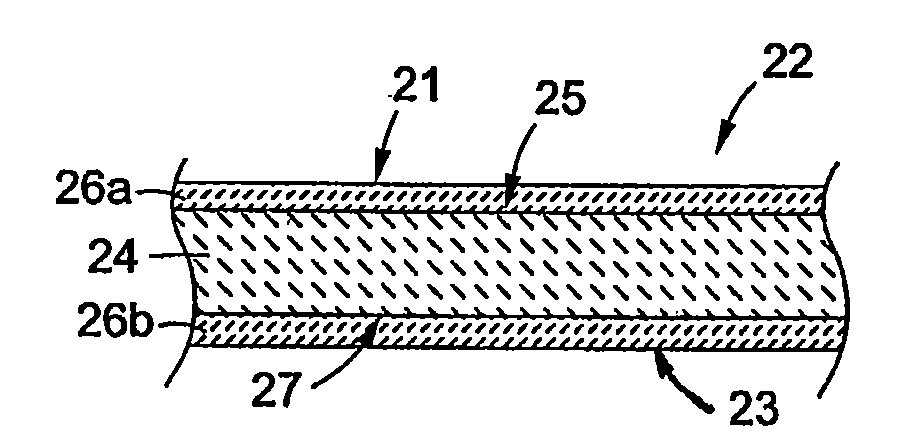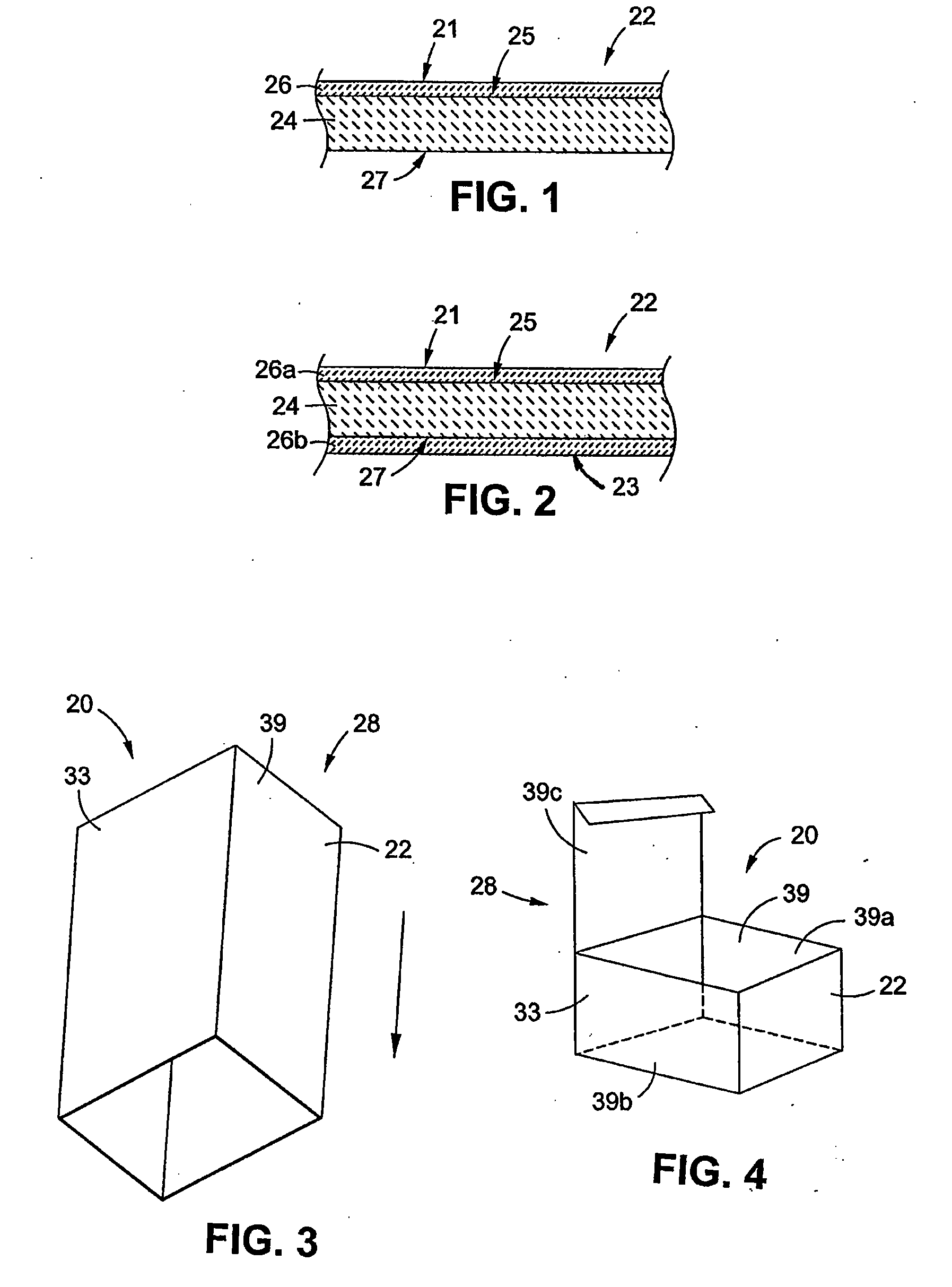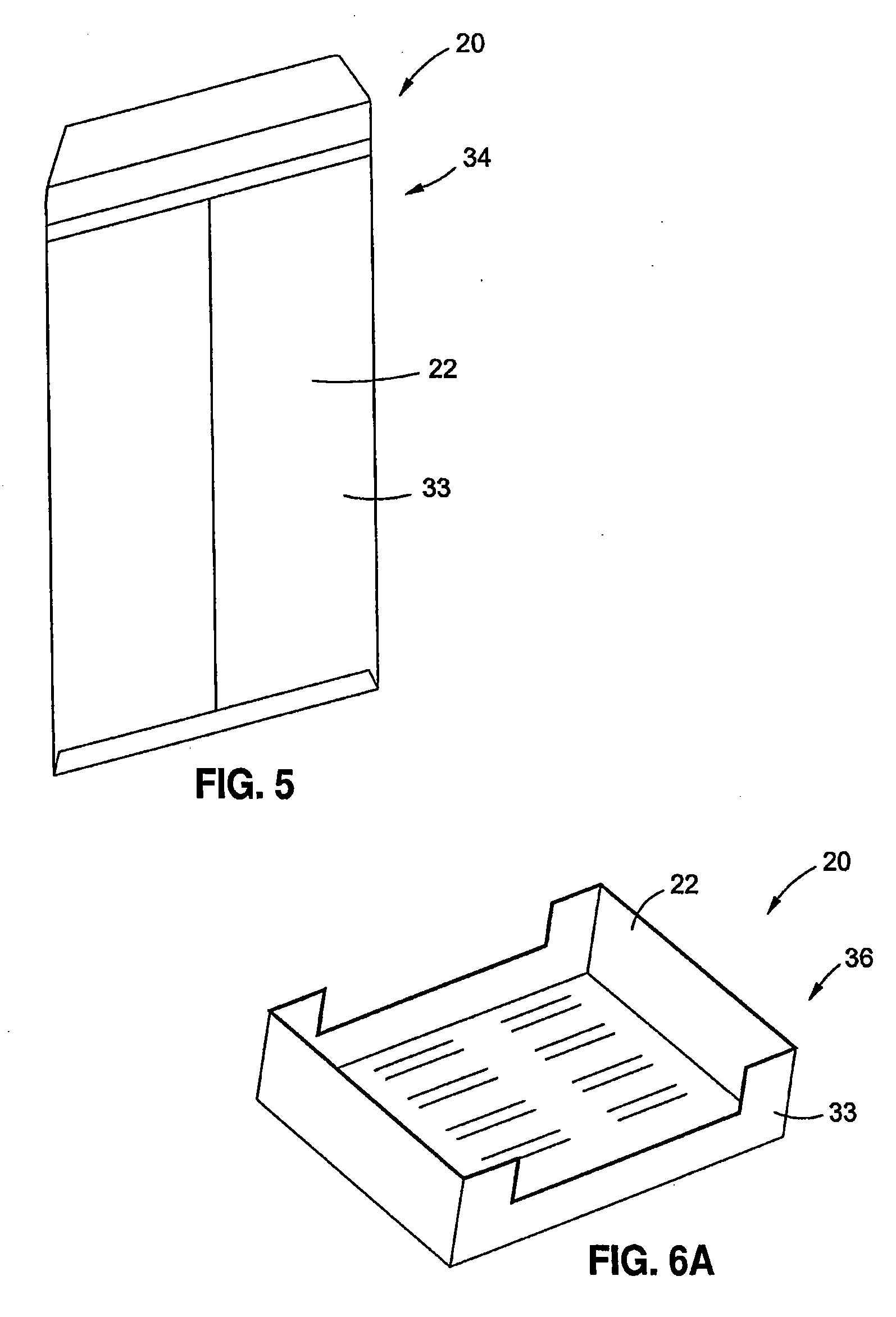Composites for packaging articles and method of making same
a technology for packaging articles and composite materials, applied in the field of composite structures, can solve the problems of difficult to create packaging products, poor configuration of lower cost packaging options to prevent theft, and the use of higher cost materials is also more expensive for packaging, and achieves a high degree of pliability and flexibility, bright and attractive printing surface, and enhanced characteristics
- Summary
- Abstract
- Description
- Claims
- Application Information
AI Technical Summary
Benefits of technology
Problems solved by technology
Method used
Image
Examples
Embodiment Construction
[0030]The detailed description set forth below is intended as a description of presently preferred embodiments of the invention, and is not intended to represent the only forms in which the present invention may be constructed or utilized. The description sets forth the functions and sequences of steps for constructing and operating the invention. It is to be understood, however, that the same or equivalent functions and sequences may be accomplished by different embodiments and that they are also intended to be encompassed by the invention unless they fall outside the scope of the claims.
[0031]It has been discovered that environmentally friendly and attractive storage articles 20, such as for example retail and / or shipping packages shown in FIGS. 3 and 4, can be constructed at least in part from a composite structure 22 shown in FIG. 1. In that embodiment, the composite is formed from a fiber-containing layer 24 and a mineral-containing layer 26 covering the fiber-containing layer ...
PUM
| Property | Measurement | Unit |
|---|---|---|
| density | aaaaa | aaaaa |
| thickness | aaaaa | aaaaa |
| thickness | aaaaa | aaaaa |
Abstract
Description
Claims
Application Information
 Login to View More
Login to View More - R&D
- Intellectual Property
- Life Sciences
- Materials
- Tech Scout
- Unparalleled Data Quality
- Higher Quality Content
- 60% Fewer Hallucinations
Browse by: Latest US Patents, China's latest patents, Technical Efficacy Thesaurus, Application Domain, Technology Topic, Popular Technical Reports.
© 2025 PatSnap. All rights reserved.Legal|Privacy policy|Modern Slavery Act Transparency Statement|Sitemap|About US| Contact US: help@patsnap.com



